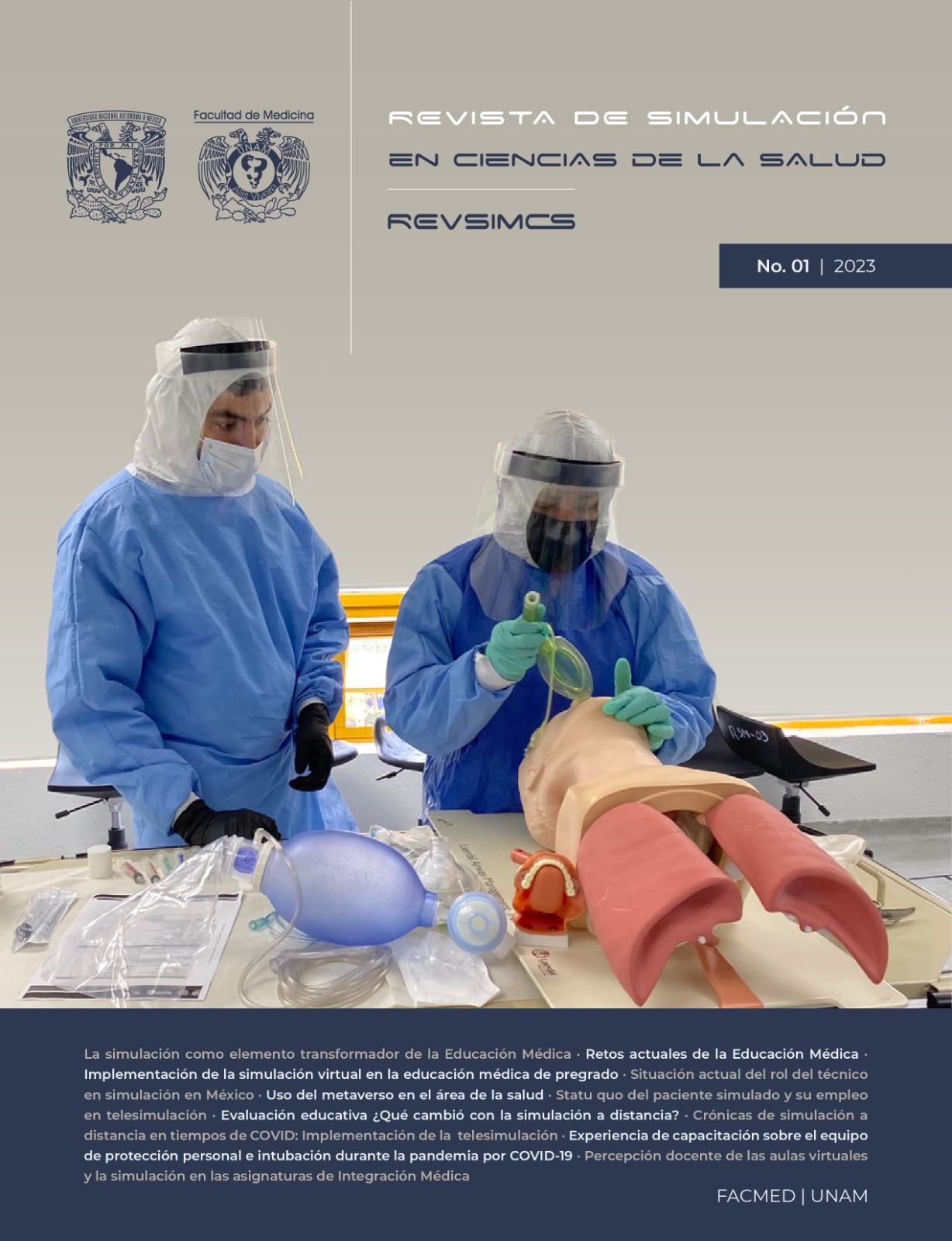Implementation of virtual simulation in undergraduate medical education
DOI:
https://doi.org/10.22201/fm.30617243e.2023.1.8Keywords:
Medical education, Simulation, Undergraduate, Body Interact, Virtual simulatorAbstract
Introduction. Medical education focuses on the training of competent health professionals for clinical practice, to achieve this it uses various strategies, including simulation, however, since the pandemic and the confinement due to COVID-19, the implementation of the hybrid model and simulation-based education, both distance and virtual, was chosen. Thus, the objective of this project was to know the experience of the use of virtual patients through the Body Interact simulator by undergraduate students of the UNAM Faculty of Medicine.
Material and methods. It is a non-experimental and quantitative study, 74 undergraduate students from the UNAM Faculty of Medicine were evaluated with two appraisal lists in a pre-test and post-test. The reliability obtained by Cronbach's Alpha test was 0.94 for the pretest and 0.95 for the posttest. It was calculated the
descriptive statistics of the results for each instrument and the T test for simple paired samples.
Results. A p <0.05 was obtained, which indicates that the difference is statistically significant between the pretest and posttest.
Discussion. Students perceive an improvement in the individual learning process with the use of the Body Interact simulator, in addition, they consider that it is related to the flexibility and accessibility of their pedagogical strategy and the curricular contents, it provides an opportunity to put their knowledge into practice, Thus, their expectations were exceeded and they felt satisfied when using it. In addition, it allowed them to develop communication, decision-making and critical thinking skills.
Conclusion. The Body Interact simulator is perceived as a useful tool to support the teaching of medical students, however, it is important to evaluate the development of clinical skills.
References
Gal, B. et al. (2020). La educación médica como necesidad para la formación de los futuros médicos. Educación Médica, 22(2), 111-118. https://doi.org/10.1016/j.edumed.2020.09.008
Morris, M. & Conroy, P. (2020). Development of a simulation-based sub-module in undergraduate medical education. Irish Journal of Medical Science (1971 -), 189(1), 389–394. https://doi.org/10.1007/s11845-019-02050-3
So, H., Chen, P., Wong, G., & Chan, T. (2019). Simulation in medical education. Journal of the Royal College of Physicians of Edinburgh, 49(1), 52–57. https://doi.org/10.4997/jrcpe.2019.112
Wang, et al. (2021). Exploration of simulation-based medical education for undergraduate students. Medicine, 100(20), e25982. https://doi.org/10.1097/MD.0000000000025982
Corveto, M. et al. (2013). Simulación en educación médica: una sinopsis. Rev Med Chile, 141, 70-79. http://dx.doi.org/10.4067/S0034-98872013000100010
Kononowicz, A., et al. (2019). Virtual Patient Simulations in Health Professions Education: Systematic Review and Meta-Analysis by the Digital Health Education Collaboration. Journal of Medical Internet Research, 21(7), e14676. https://doi.org/10.2196/14676
Prasad, N., et al. (2020). Online interprofessional simulation for undergraduate health professional students during the COVID-19 pandemic. Journal of Interprofessional Care, 34(5), 706–710. https://doi.org/10.1080/13561820.2020.1811213
Body Interact. Recuperado el 09 de noviembre del 2021 de https://bodyinteract.com/
Cant, R. & Cooper, S. (2017). Use of simulation-based learning in undergraduate nurse education: An umbrella systematic review, Nurse Education Today, 49, 63-71. https://doi.org/10.1016/j.nedt.2016.11.015
Alamrani, M. et al. (2018). Comparing the Effects of Simulation-Based and Traditional Teaching Methods on the Critical Thinking Abilities and Self-Confidence of Nursing Students. Journal of Nursing Research, 26(3), 152-157. http://doi:10.1097/jnr.0000000000000231
Anbro, S., et al. (2020). Using Virtual Simulations to Assess Situational Awareness and Communication in Medical and Nursing. Education: A Technical Feasibility Study, Journal of Organizational Behavior Management, 40:1-2, 129-139. https://doi.org/10.1080/01608061.2020.1746474



